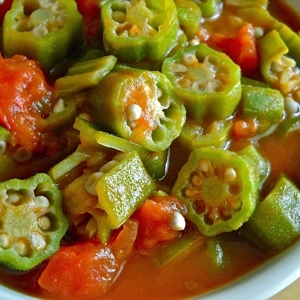I’ve recently spotlighted a couple of foods that create a polemic split among diners. You either love them or hate them. But Sister Erin has reminded me, there are many other foods that folks consider either great or gross…
 Oysters Rockefeller: A world away from their uncooked
Oysters Rockefeller: A world away from their uncooked
cousins on the half-shell. And a lot tastier!
I recently endorsed sardines (a couple of times) in posts about ‘healthy fish’. And I made a point that they are universally either loved or hated. No middle ground. It has to do largely with their fishy taste and oily mouth feel. But they are a bone fide superfood, based on all the good things they deliver in abundance. I’ve also mentioned olives in the same context. And I think we’ve all run into the anchovy ‘controversy’ at one time or another.
Noting this ‘trend’, Sister Erin – with a twinkle in her eye – actually found a slide show post spotlighting 18 foods for which there is no preferential middle ground. I want to share a few with you, shining the light of my own wisdom and experience on them…
A world of contentious comestibles
Herewith, a carefully curated selection of some of the most polarizing, yet common foods from around the globe…
Liver
Be it cow’s or chicken’s, liver has been a source of disagreement at dinner time since time immemorial. Like other such foods, it’s rich in high-quality protein, and packed with essential vitamins and minerals. as well as a number of bad things. Haters point to it’s earthy flavour and often grainy mouth feel.
If you want a gentle introduction to liver, try an Asian dish featuring chicken livers. They’re much milder in flavour than beef liver, and – if prepared properly – come out downright creamy in texture.
Oysters
Oysters are traditionally eaten freshly opened, live, on the half-shell, off a bed of ice. A little slurp of the water they were harvested from and a squeeze of lemon helps them slide down. Oyster nay-sayers insist the mouth feel is ‘slimy’. And they just can’t get over the idea of eating them live. But many of them will accept oysters baked with a little white wine, and topped with butter, herbs and bread crumbs. Voilà! Oysters Rockefeller!
Like most shellfish, oysters are low in bad fats and high in protein. And a serving tops out at only about 120 Calories. They’re high in potassium. iron and magnesium. But also rather high in salt – about 17 percent of your daily recommended allowance. Oh. well… You can’t have everything…
Okra
Here we go again , with the ‘slimy’ claim. yes, they can be extremely gooey – depending on how they’re prepared. But if they come out that way, you’ve overcooked them! Rely on recipes and procedures recommended by authentic Indian, Mediterranean, West African or Southern US cooks for best results. It provides a wide variety of vitamins and minerals, delivers a load of fibre, and is said to support heart health and help control blood sugar.
Okra has a long, colourful folkloric history. Among the more persistent beliefs is that the stuff is particularly beneficial for pregnant women.
Some have lauded okra as a superfood…
Squid
Squid is reviled by many as – you guessed it – slimy. But when cut in rings and breaded as Calamari, it can be not only tolerated by adored. Squid is a very lean seafood: low in fat, sodium and carbs, and rich in protein. You also get a useful dose of iron, calcium and potassium in a standard 100 g serving.
If you’re serious enough to explore Asian squid and octopus recipes, you’ll find a whole unsuspected variety of other prep methods and flavour treatments!
Tofu
Who could bring themselves to hate poor, innocuous, flavour-challenged tofu? It guess the ‘flavour’ thing has a lot to do with it. And that’s largely because westerners try it without imparting classic Asian flavours to it. Flavouring is an essential element of tofu cuisine. Tofu is a really great, super-versatile food. Yet it’s simple in principle: fermented soy bean curd. It’s a concentrated blend of good-for-you ingredients: high in protein, low in fat, packed with essential nutrients.
According to the American Heart Association, a 2020 study published in the learned journal Circulation found that those eating at least one serving of tofu a week had an 18 percent lower risk of heart disease compared with those who rarely ate tofu.
My take
We could all do with a taste of these (in)famous foods from time to time. If you’re among the haters of any of the foods listed above… I recommnend you consider giving them another chance, in another prep style and/or cultural context…
Variety is the spice of life!
~ Maggie J.

